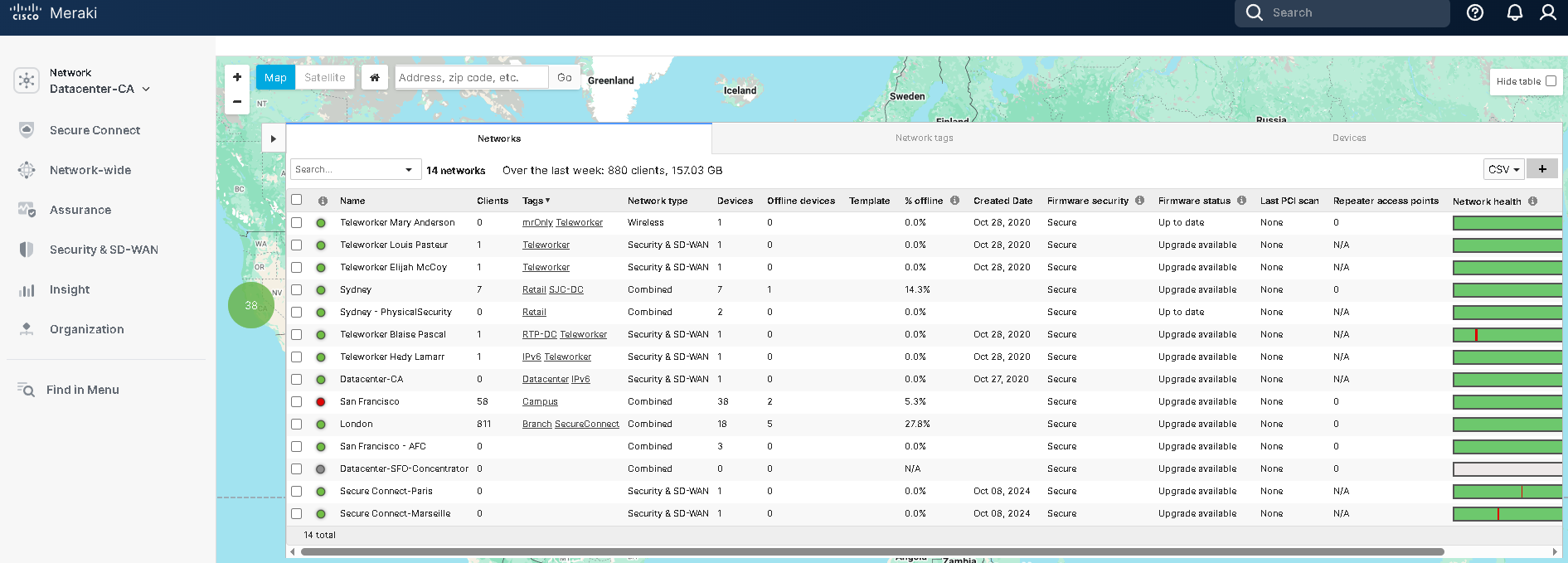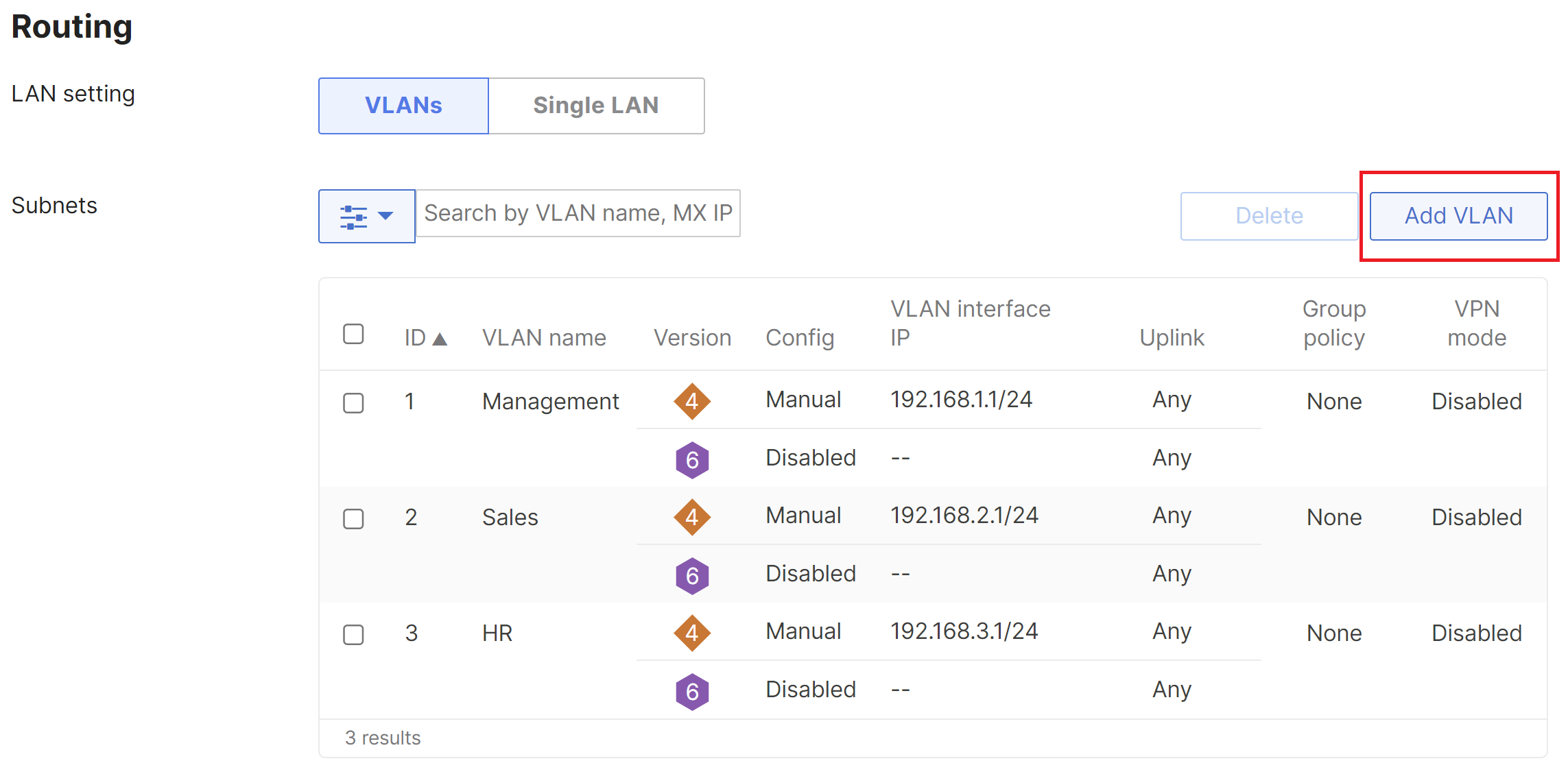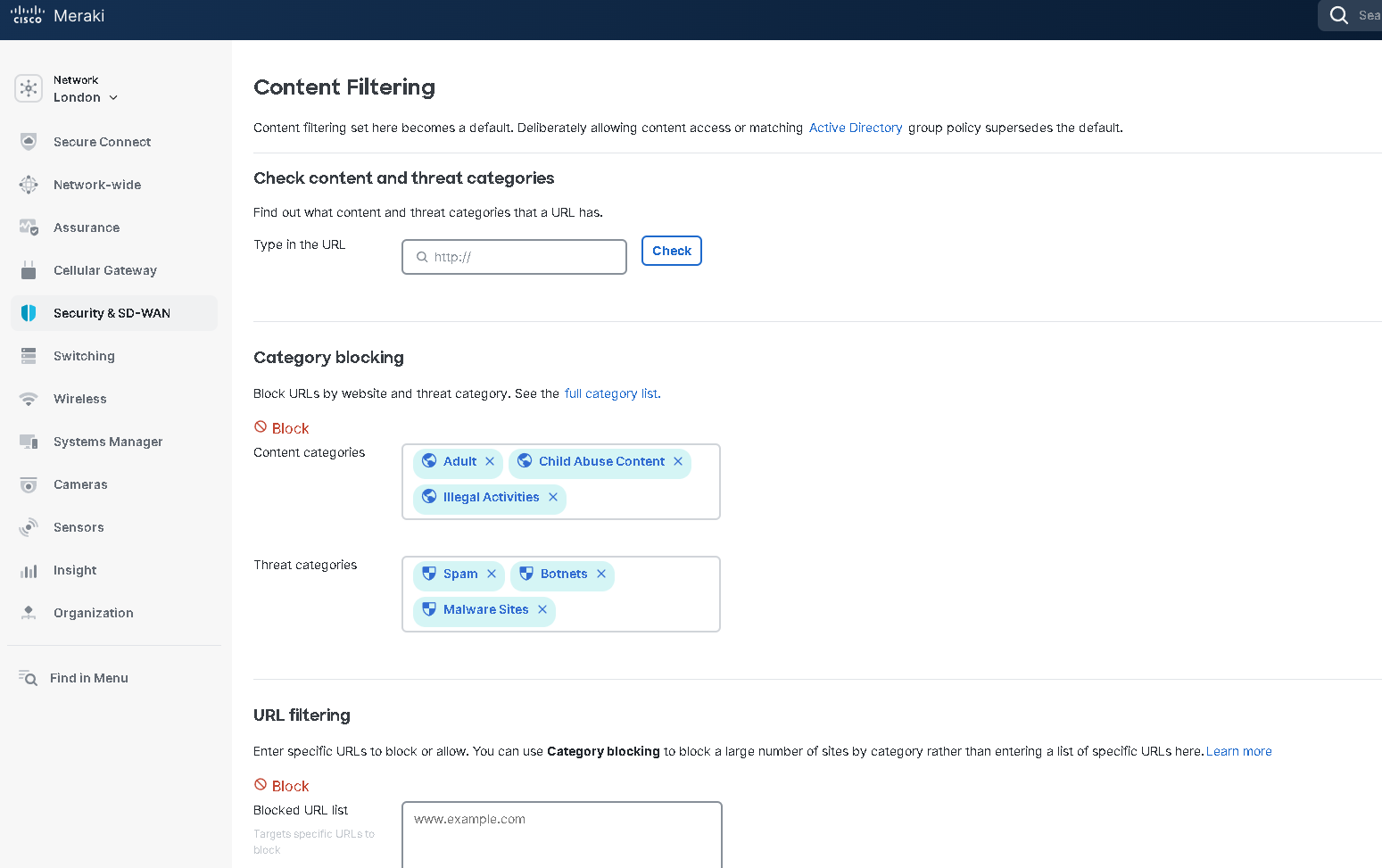Meraki Network Simulation:
Building and Managing Cloud-Managed Networks
Cisco Meraki’s cloud-based dashboard offers powerful tools for designing and managing enterprise-grade networks. In this lab, I simulated a multi-site network environment, configured key features like VLANs and VPN connectivity, and tested policies for bandwidth shaping, content filtering, and device monitoring.Emulating a Multi-Site Network Environment
The simulation began with building out a multi-site network topology in the Meraki dashboard. Each site represented a branch office connected to the cloud, giving visibility into distributed networking from a single pane of glass.

Configuring VLANs, Firewall Rules, and VPN Connectivity
VLANs were created to segment traffic by department (e.g., Sales, HR, and Engineering). Firewall rules were applied to restrict traffic between VLANs and enforce security policies.
I also configured site-to-site VPN tunnels between branch offices, allowing secure communication across the network. Testing confirmed that inter-branch applications and services were reachable.

Simulating Bandwidth Shaping and Content Filtering
To optimize network performance, I applied bandwidth shaping policies that prioritized VoIP and video conferencing while limiting non-business traffic like social media.
I also enabled content filtering policies to block access to inappropriate or non-productive websites. These policies were tested across different VLANs to confirm proper enforcement.

Device Registration, Tagging, and Monitoring
Finally, I practiced registering devices in the Meraki dashboard and assigning tags for role-based management. Tags were used to group devices for monitoring, policy assignment, and troubleshooting.
The dashboard provided real-time monitoring, including application usage, traffic flows, and security alerts, enabling proactive network management.

Conclusion
This Meraki network simulation demonstrated how cloud-managed networking simplifies multi-site deployments. From VLANs and VPNs to bandwidth shaping and content filtering, the lab provided practical insights into managing enterprise networks at scale.
Practicing device registration, tagging, and monitoring further highlighted Meraki’s ability to centralize visibility and control, making it a valuable tool for both learners and IT professionals.